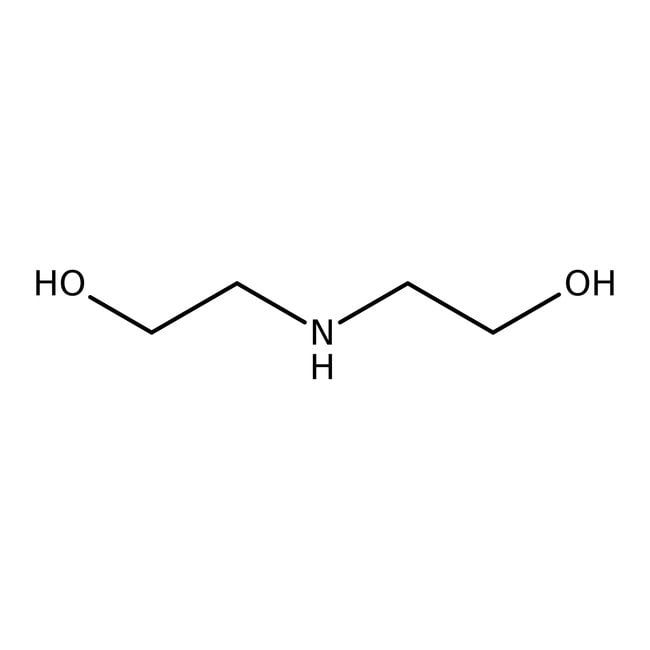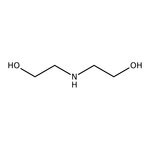Search Thermo Fisher Scientific
Diéthanolamine, 99 %, Thermo Scientific Chemicals



Diéthanolamine, 99 %, Thermo Scientific Chemicals
Identifiants chimiques
Spécifications
Description
This Thermo Scientific Chemicals brand product was originally part of the Alfa Aesar product portfolio. Some documentation and label information may refer to the legacy brand. The original Alfa Aesar product / item code or SKU reference has not changed as a part of the brand transition to Thermo Scientific Chemicals.
La diéthanolamine est utilisée dans la préparation de la morpholine et du diéthanolamide, qui est un ingrédient actif dans les cosmétiques et les shampooings. Il agit comme un surfactant et un inhibiteur de corrosion. Il est utilisé pour éliminer le sulfure d’hydrogène et le dioxyde de carbone du gaz naturel. De plus, il s’agit d’un intermédiaire utilisé dans les produits chimiques en caoutchouc, comme agent humectant et adoucissant, comme émulsifiant et agent dispersant dans les produits chimiques agricoles. En outre, il est utilisé dans les huiles de coupe, les nettoyants, les savons, les polisseurs et les produits pharmaceutiques.
Solubilité
Miscible à l’eau.
Remarques
Hygroscopique et sensible à l’air. Incompatible avec les agents oxydants forts, les acides forts, le cuivre, le zinc, le dioxyde de carbone et le fer.
Figures
Documentation et téléchargements
Certificats
Foire aux questions (FAQ)
Citations et références
Sécurité et manipulation
Classification of the substance or mixture
CLP classification - Regulation(EC) No 1272/2008
Label Elements
Signal Word
Danger
Hazard Statements
H302 - Harmful if swallowed
H315 - Causes skin irritation
H318 - Causes serious eye damage
H361fd - Suspected of damaging fertility. Suspected of damaging the unborn child
H373 - May cause damage to organs through prolonged or repeated exposure
Precautionary Statements
P280 - Wear protective gloves/protective clothing/eye protection/face protection
P301 + P330 + P331 - IF SWALLOWED: rinse mouth. Do NOT induce vomiting
P302 + P352 - IF ON SKIN: Wash with plenty of soap and water
P305 + P351 + P338 - IF IN EYES: Rinse cautiously with water for several minutes. Remove contact lenses, if present and easy to do. Continue rinsing
P310 - Immediately call a POISON CENTER or doctor/physician